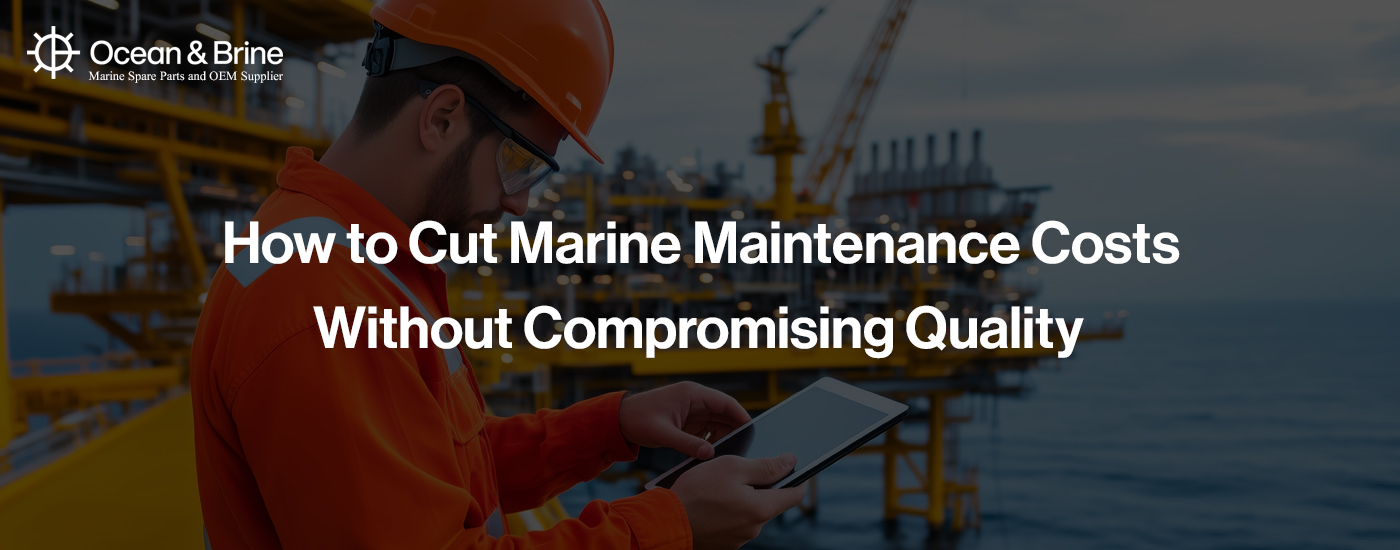In marine engineering and operations, reducing maintenance costs without compromising quality is a difficult but attainable goal. It demands a careful balance of operating efficiency and strict attention to safety regulations.
As you face this difficulty, remember that safety is more than just a compliance measure; it is also an investment in the longevity and reputation of your operations. To guarantee that safety remains a top priority while minimizing expenses, you must take a comprehensive approach that examines all parts of maritime operations, from procurement to maintenance, without jeopardizing the integrity of safety requirements.
With the right strategy, it is entirely possible to reduce marine maintenance costs without sacrificing quality or safety. Here is how.
Choose predictive maintenance
Marine Spare parts are typically maintained based on a set of protocols that can either result in repeated servicing under-servicing or missing issues. The latest sensors and IoT technologies offer predictive maintenance and monitor equipment health in real-time. Using performance data, we can identify potential failures and issues in advance and avoid costly emergency repairs and unplanned downtime.
Improve procurement
Planning an enhanced procurement is critical to cost savings in marine parts maintenance. Start by negotiating better rates with suppliers or looking into other sources for materials and parts that fulfil the necessary safety standards. Bulk purchases of widely used items might also result in big discounts. However, it is critical to maintain a rigorous quality evaluation procedure to ensure that cheaper does not correlate to inferior quality, which could jeopardize vessel safety and result in greater long-term expenses due to failures or accidents.
Quality over cost
It may be tempting to cut costs with less expensive parts, but inexpensive generally implies short-lived. Investing in high-quality components and materials yields long-term benefits such as increased steadfastness and reduced replacement frequency. Fewer breakdowns mean fewer budget surprises.
Streamline Operations
We can streamline operations that result in large cost savings. By examining the existing procedures, you can identify any inefficiencies or redundancies that can be eliminated or consolidated for better processes. Implementing lean management principles can boost production and minimize waste while maintaining safety. Automation and technology updates can also improve operational efficiency.
Preventive Maintenance
You might want to implement a strong preventative maintenance program to lower costs and ensure safety. Regular maintenance checks help prevent equipment failures, which otherwise demand costly emergency repairs or replacements. This practical approach extends the life of maritime components, and assures operational safety, avoiding incidents that could result in significant financial and reputational repercussions.
Condition-based scheduling
This type of maintenance unlike the scheduled timely maintenance is condition-based and responds to real-time wear and tear and performance. Installing a computer maintenance management system (CMMS) can help track usage patterns and service history, and automate scheduling to ensure optimal timing—saving both time and money.
Routine maintenance inspections
Create a robust routine of scheduled inspections with consistent checklists. These simple, consistent assessments can detect minor errors before they become significant, expensive problems. It’s easy, inexpensive, and keeps everything running smoothly.
Train the vessel crew
A well-trained crew greatly contributes to preventing maintenance difficulties. Regular training not only improves technical abilities but also helps your team identify early danger indicators. Cross-training also enables crew members to perform basic onboard repairs, which reduces the need for third-party assistance.
Make use of remote diagnostics
Expert help is available and you need not necessarily depend on having technicians physically onboard. Many marine systems now utilize remote diagnostics, allowing technicians to assess problems from anywhere. This reduces the need for travel and speeds up troubleshooting—saving time and cost without compromising service quality.
Maintain trusted vendors list
Sustaining too many vendor relationships might become inefficient. Form long-term partnerships with a few reliable suppliers and service providers. This enables you to negotiate bulk discounts, and bundled service packages, and establish accountability over time.
Optimize spare parts inventory
Keeping extra inventory is a silent cost killer. Adopt just-in-time inventory procedures and employ digital technologies to track stock levels and consumption patterns. Focus on storing vital spares to avoid waste from unused or obsolete parts.
Cutting maintenance costs need not mean cutting corners. Smart investments, effective data, andcrew training, help marine operators maintain high standards while keeping their bottom line healthy. Promoting a culture of constant innovation can result in cost-effective solutions without sacrificing safety. Discover areas for improvement and invent methods to save money while maintaining or improving safety. It could be novel materials, system upgrades, or procedure refinement, innovation should attempt to achieve the combined goals of cost-effectiveness and uncompromising safety.
